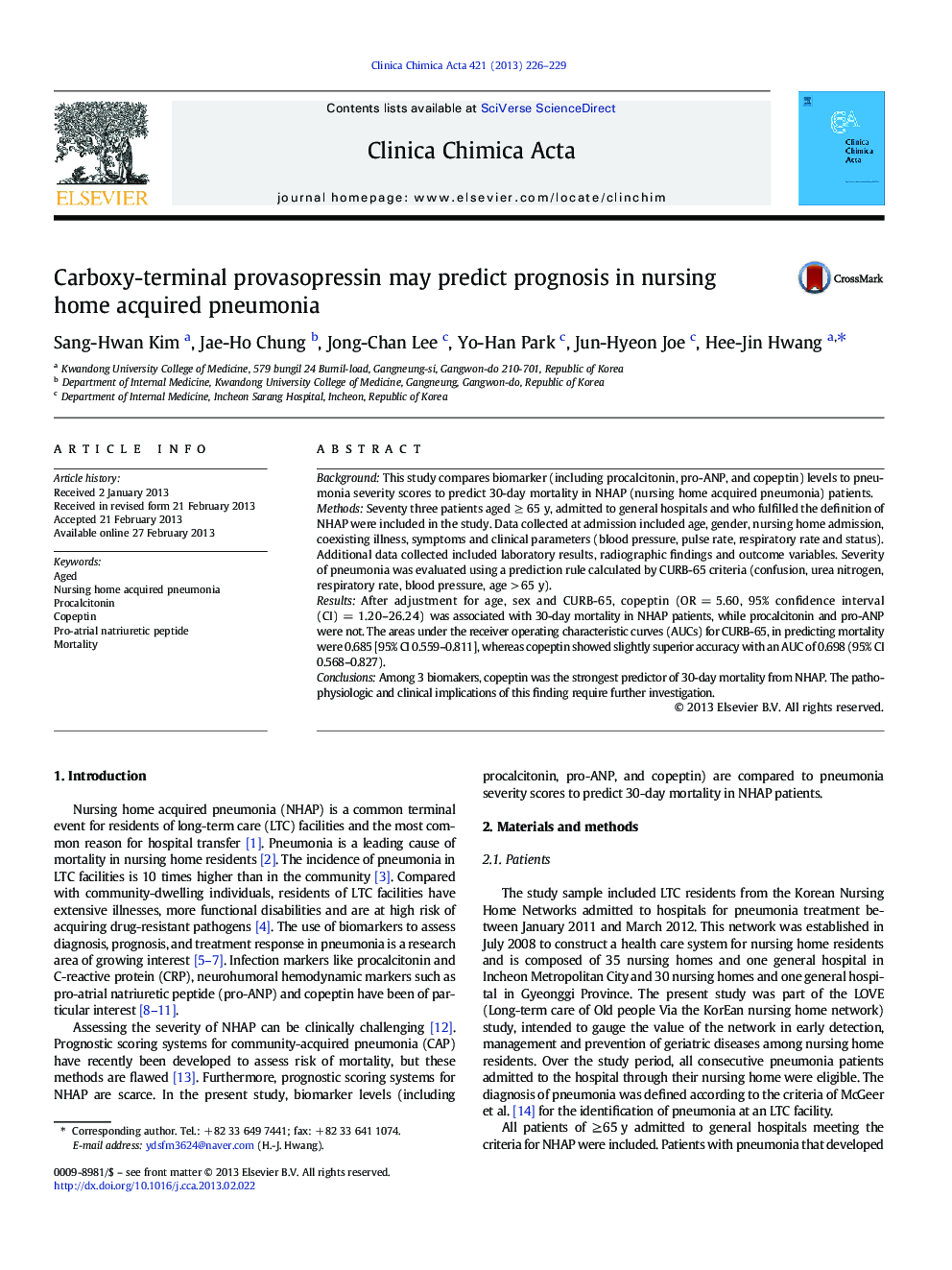| Article ID | Journal | Published Year | Pages | File Type |
|---|---|---|---|---|
| 8313516 | Clinica Chimica Acta | 2013 | 4 Pages |
Abstract
BackgroundThis study compares biomarker (including procalcitonin, pro-ANP, and copeptin) levels to pneumonia severity scores to predict 30-day mortality in NHAP (nursing home acquired pneumonia) patients.MethodsSeventy three patients aged â¥Â 65 y, admitted to general hospitals and who fulfilled the definition of NHAP were included in the study. Data collected at admission included age, gender, nursing home admission, coexisting illness, symptoms and clinical parameters (blood pressure, pulse rate, respiratory rate and status). Additional data collected included laboratory results, radiographic findings and outcome variables. Severity of pneumonia was evaluated using a prediction rule calculated by CURB-65 criteria (confusion, urea nitrogen, respiratory rate, blood pressure, age > 65 y).ResultsAfter adjustment for age, sex and CURB-65, copeptin (OR = 5.60, 95% confidence interval (CI) = 1.20-26.24) was associated with 30-day mortality in NHAP patients, while procalcitonin and pro-ANP were not. The areas under the receiver operating characteristic curves (AUCs) for CURB-65, in predicting mortality were 0.685 [95% CI 0.559-0.811], whereas copeptin showed slightly superior accuracy with an AUC of 0.698 (95% CI 0.568-0.827).ConclusionsAmong 3 biomakers, copeptin was the strongest predictor of 30-day mortality from NHAP. The pathophysiologic and clinical implications of this finding require further investigation.
Related Topics
Life Sciences
Biochemistry, Genetics and Molecular Biology
Biochemistry
Authors
Sang-Hwan Kim, Jae-Ho Chung, Jong-Chan Lee, Yo-Han Park, Jun-Hyeon Joe, Hee-Jin Hwang,
